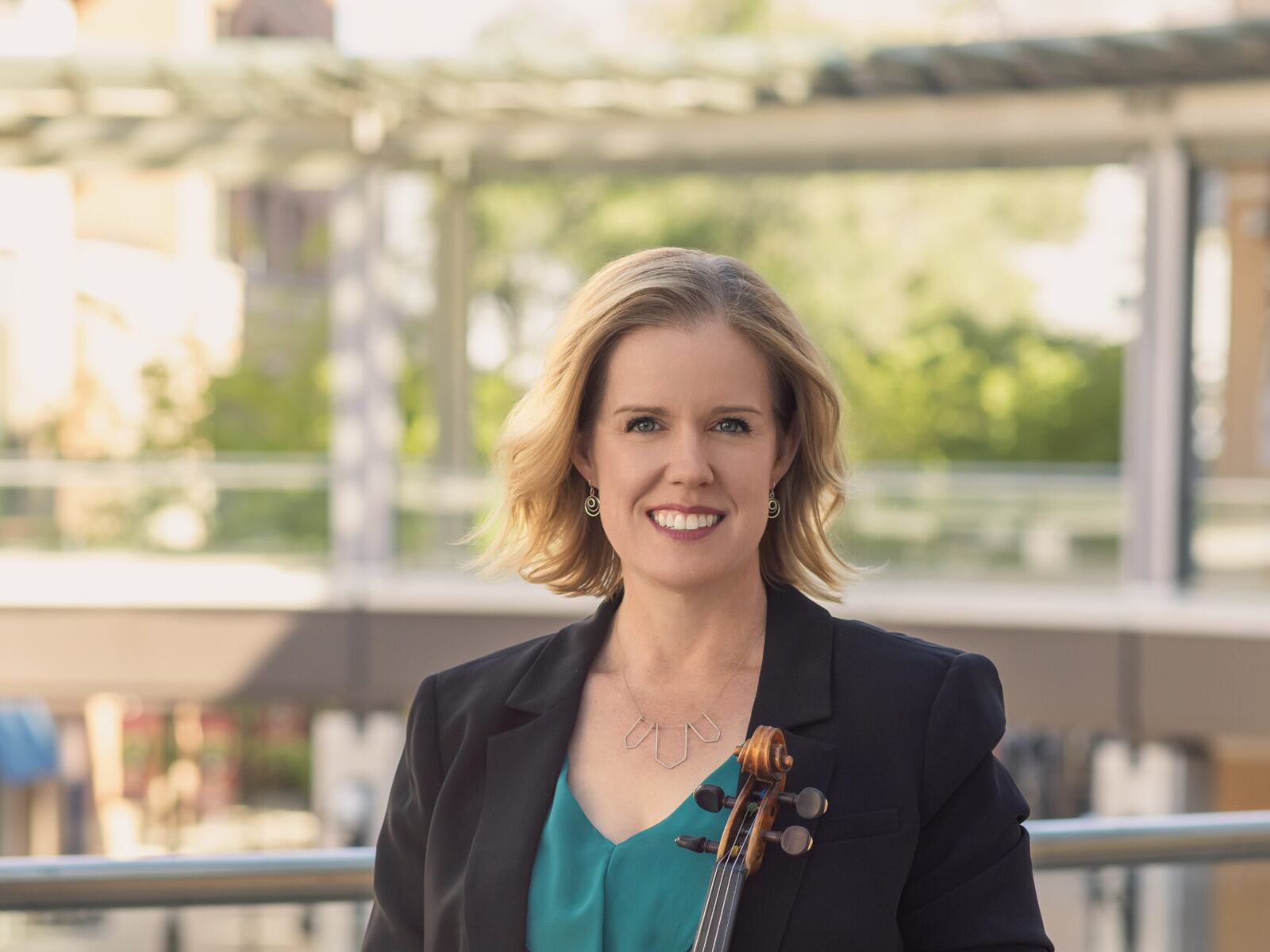Madeline Adkins started playing the violin at five years old. By the time she was 15, her goal was to become a concertmaster — a role Adkins describes as “a bit like the quarterback, whereas the conductor is the coach.” Today, as concertmaster of the Utah Symphony and a frequent guest concertmaster with prestigious orchestras worldwide, Adkins is instrumental in shaping the musical landscape of Utah.
Adkins’s early career was marked by numerous accolades, including first prizes in the Stulberg International String Competition, ASTA National Solo Competition, and the New England Conservatory Concerto Competition. Before becoming concertmaster of the Utah Symphony, she served as associate concertmaster with the Baltimore Symphony Orchestra from 2005-2016.
Adkins’s role as concertmaster goes beyond technical skill; it requires exceptional leadership and communication abilities. She helps shape the musical interpretation of each piece the Symphony performs, making critical decisions regarding bowings, phrasing, and articulation and serving as a crucial link between the conductor and the orchestra.
“My main strategy is just to lead by example. I am always 150 percent prepared and always giving absolutely everything to the music,” Adkins says. “I also interface a lot with our board members and with community members, trying to build that community and help everyone realize how important the Utah Symphony is in the fabric of Salt Lake City and the state of Utah.”
Her global experience as a guest concertmaster has diversified her approach to this position, bringing unique perspectives and techniques to Utah while sharing personal approaches when abroad. “Being a guest concertmaster with other orchestras really opens your eyes to the many different ways of doing things,” she notes.
Under her leadership, the Utah Symphony has continued to excel and innovate. One of her remarkable initiatives was commissioning and premiering a new concerto, “The Maze,” by composer Nathan Lincoln de Cusatis, inspired by the dramatic scenery of Canyonlands National Park. This project exemplifies her commitment to making classical music relevant and accessible to diverse audiences.
Adkins’ impact extends beyond her role at the Symphony as she engages with students in education programs across the country. “I was just coaching the National Youth Orchestra, which is a Carnegie Hall program [with] the top high school kids from all of the United States,” she says. “Anytime that you’re teaching and sharing knowledge, it really helps you drill down and solidify what you think about things. I always bring that back to my work at the Utah Symphony.”
Looking to the future, Adkins aims to continually elevate the Utah Symphony’s international reputation. “I would love to see the Utah Symphony even more well-known in the U.S. and the world,” she says. Her leadership and efforts to showcase the orchestra on global stages play a crucial role in achieving this goal. To Main Page

